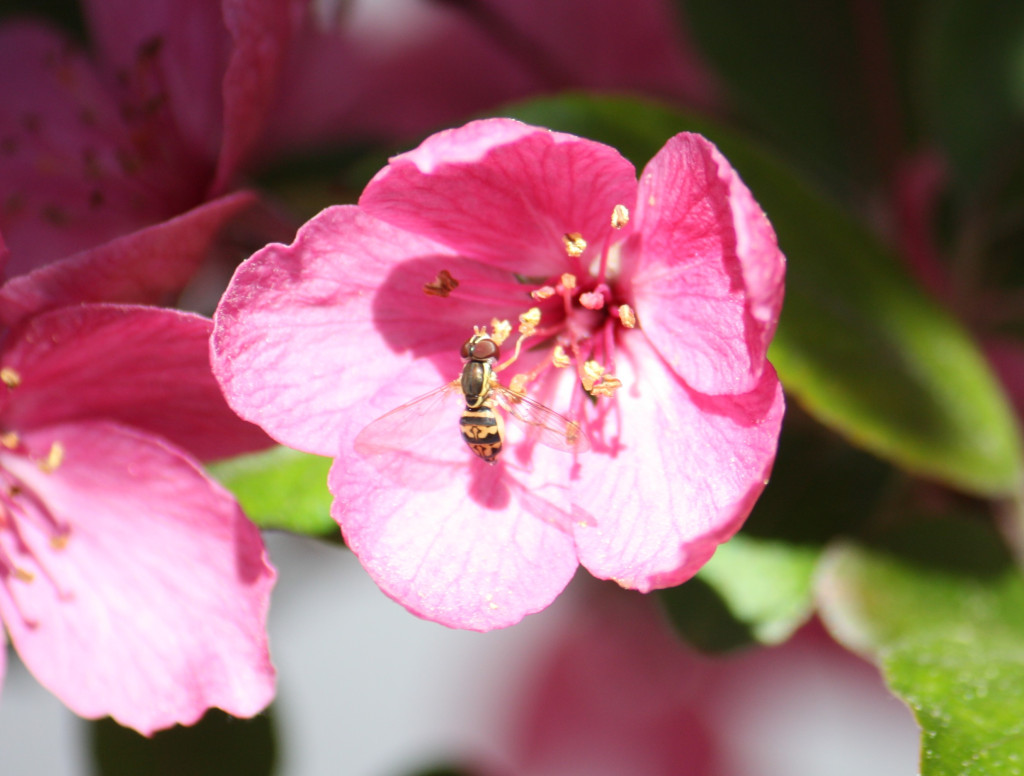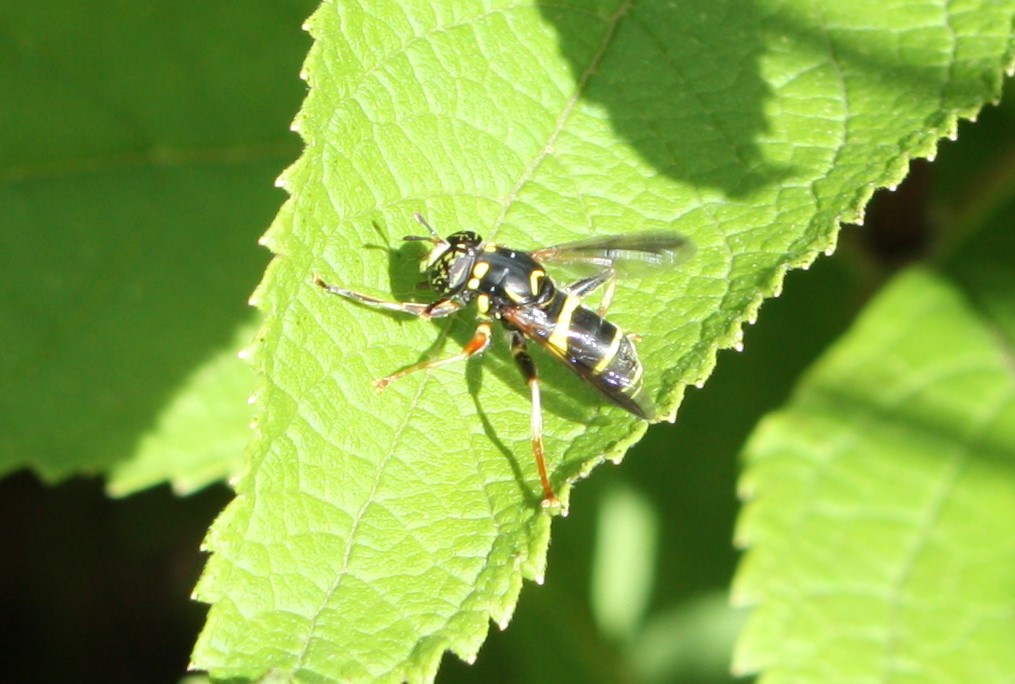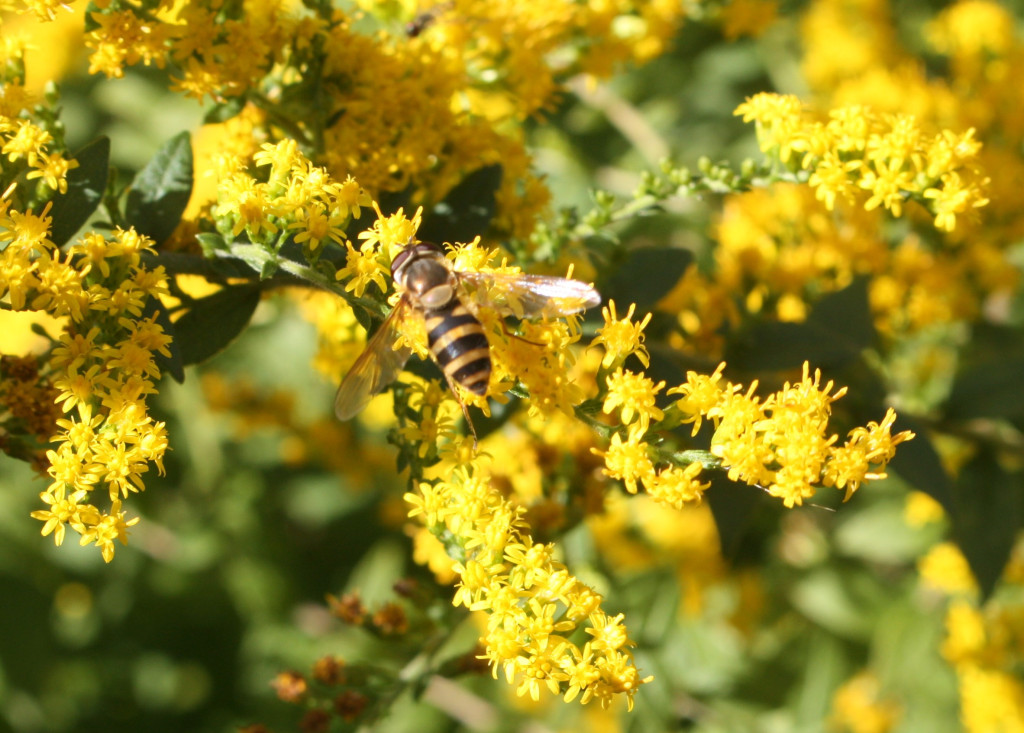The following is a very short summary of an excellent blog post on flower flies by Berit Erickson. Please be sure to read the full post here – Flower flies: surprise pollinators – as it includes tips for identifying these insects, more photos, and links to more detailed information.
Is it a fly?
Once you know what to look for, flies are easy to spot. They have a few easily recognizable features that distinguish them from other pollinators — their heads are larger, and are almost all eyes, and they have very short antennae. Flies also have only two wings, while bees and wasps have four wings.
An insect with a PR problem
When I hear the word “flies,” I immediately think of house flies…. The flies that I’ve seen in my garden are much more posh than house flies. Most belong to the syrphid family, commonly known as hover flies, or flower flies. They visit flowers for nectar, and sometimes pollen too. They’re valuable pollinators; it’s estimated that they carry out one-third of agricultural pollination services… [and] complement the pollination work done by other insects because they prefer cooler temperatures, between 15°C and 25°C.
Identifying flower flies in the garden
I tried to identify the flower flies in my photos using a new book, the Field Guide to the Flower Flies of Northeastern North America, by Jeffery Skevington et al… Well, it turns out that identifying flies isn’t so easy for an amateur like me. There are many kinds, and similar ones with subtle differences that require magnification to see. There is no way I can tell if their legs are hairy or smooth, or examine their unique facial features. To double-check my preliminary IDs [based on the field guide], I also submitted the photos to iNaturalist to see what others thought.
Be sure to read Berit’s full posting – Flower flies: surprise pollinators.



